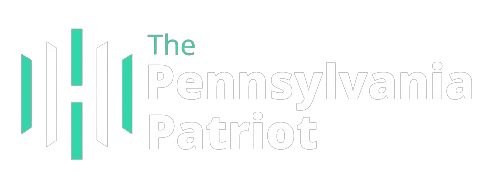Education advocates say the lights will go out in Pennsylvania on Friday night, just one of the more evident effects of Doug Mastriano’s public school funding plan.
A forecast of school funding and staff reductions based on the Republican gubernatorial candidate’s public statements about eliminating school property taxes, cutting per-pupil spending and providing school choice vouchers shows that some school districts’ revenues could decline by as much as 67 percent.
By one estimate, total public education revenues would decline by nearly $13 billion, nearly 120,000 jobs would be lost and the student-teacher ratio would double. analysis released Tuesday by the Pennsylvania State Education Association, a union representing 178,000 teachers and support staff.
The analysis shows that eliminating school property taxes would require an additional $6 billion in state revenue to fund public education, even with the reduced costs Mastriano proposes.
PSEA’s analysis shows many districts hardest hit in rural areas of the state, including districts in Mastriano’s south-central Pennsylvania Senate district.
“Our schools are already hanging by a thread, the idea that funding could be cut in half and our local school systems would be devastated,” said Susan Spicka, executive director of Education Voters PA, a public education advocacy group.
Spicka said Mastriano’s proposals would change everything about the public education that Pennsylvania parents value, from teachers’ ability to focus on individual students to eliminating music, art and sports.
“People like Friday football games. There would be no Friday night football in Pennsylvania because there would be no sports,” Spicka said.
In a March appearance on WRTA-FM in AltoonaMastriano has expressed opposition to Pennsylvania’s system of financing local governments and schools through property taxes, citing the burden on seniors and the loss of homes sold by the sheriff when owners are unable to pay.
“And that begs the question, have you ever actually owned your property, even after you’ve paid it off, even after you’ve paid off your mortgage, and now you’re basically paying rent here to the state government,” Mastriano said.
Characterizing education spending as wasteful and unskilled, Mastriano said he would eliminate property taxes and reduce annual per-pupil spending from a statewide average of just over $19,000 to $9,000 or $10,000.
In 2020–21, Pennsylvania ranked eighth in the nation in per-student spending. Only two states, Idaho and Utah, spent less than $9,000 per student. says the National Education Association.
Mastriano said that under his plan, public education funds would go to families with children in the form of school vouchers.
In a radio interview and in video on your YouTube channelMastriano cites conservative claims that public schools apply their platform to indoctrinate students in subjects such as critical race theory, a discipline not taught in public schools.
“By the way, this will end on the first day of my term, but that doesn’t really solve the problem. We need school choice. You decide whether you want to study in a public school, home school, private school, religious school, and the money goes to the children,” Mastriano said in the video.
In the minute-long spot, Mastriano claims that each child will receive $15,000 a year.
“I bet public schools would clean up their act here because they’re going to have to compete in the marketplace of ideas rather than clinging to a monolithic grip — a death grip — of what kids learn,” Mastriano said.
In a radio interview, Mastriano expressed hope that reduced spending and improved efficiency would make up for the loss of property tax revenue, but acknowledged that a sales or income tax augment might be necessary.
Mastriano and his campaign did not respond to messages demanding more details about his plan and a response to PSEA’s criticism.
A spokesman for Democratic gubernatorial candidate Josh Shapiro said Mastriano’s plan is reckless and will wreak havoc on students, families and teachers who are already struggling.
The proposal is an example of why Mastriano is too extreme to be governor, spokesman Manuel Bonder said.
“Josh Shapiro believes students deserve the opportunity to plan their own futures and parents deserve a real voice in their children’s education, which is why as governor he will prioritize mental health, provide students with career, technical and computer training, and ensure education funds are spent wisely , to ensure that all Pennsylvania children have an equal opportunity to succeed,” Bonder said.
Nathan Benefield, senior vice president of the Commonwealth Foundation, a conservative think tank in Harrisburg, called the union’s analysis an attack advertisement from a political organization that has already endorsed Shapiro.
Benefield argued that voters should be aware that public school enrollment and achievement have declined despite current spending levels billions of dollars in reserves.
“The only way to ensure accountability in education is to provide parents with the financial resources to enable students to access educational opportunities that best meet their needs,” Benefield said.
Christopher Lilienthal, a spokesman for PSEA, acknowledged that the numbers in the analysis represent a worst-case scenario and that such a plan would need to be passed by the state Legislature.
“We believe Pennsylvanians deserve a clear picture of what this proposal will mean,” Lilienthal said.
The severity of the impact on school districts depends on several factors, such as the extent to which districts rely on property taxes, maintenance costs and current funding levels. The analysis assumed that the state Department of Education would fully fund the $9,000 vouchers for students and that all non-property taxes and federal revenues would remain unchanged.
Districts with per-pupil spending above the state average would see the largest declines.
The Lower Merion School District in Montgomery County, which is often cited as an outlier for the highest levels of school spending, will see a 67 percent decline. Other neighborhoods in the Philadelphia and Pittsburgh suburbs would be similarly affected. The analysis shows that the Philadelphia school district, which is chronically underfunded, will only see a 19 percent decline in revenue.
Many rural school districts would also see drastic declines. The Wallenpaupack Area School District in Pike County will see a 56 percent decline in revenue. The Gettysburg Area School District in Mastriano’s Senate district will see a 32 percent decline. Revenue in the Chambersburg Area School District would decline by 17 percent.
Ed Albert, executive director of the Pennsylvania Association of Rural and Small Schools, said Mastriano’s proposal is especially concerning after this year’s historic budget increases. That followed seven years of petite steps toward recovery after former Gov. Tom Corbett cut the education budget by $1 billion.
“We must be crazy to support what [Mastriano’s] victim,” Albert said.

